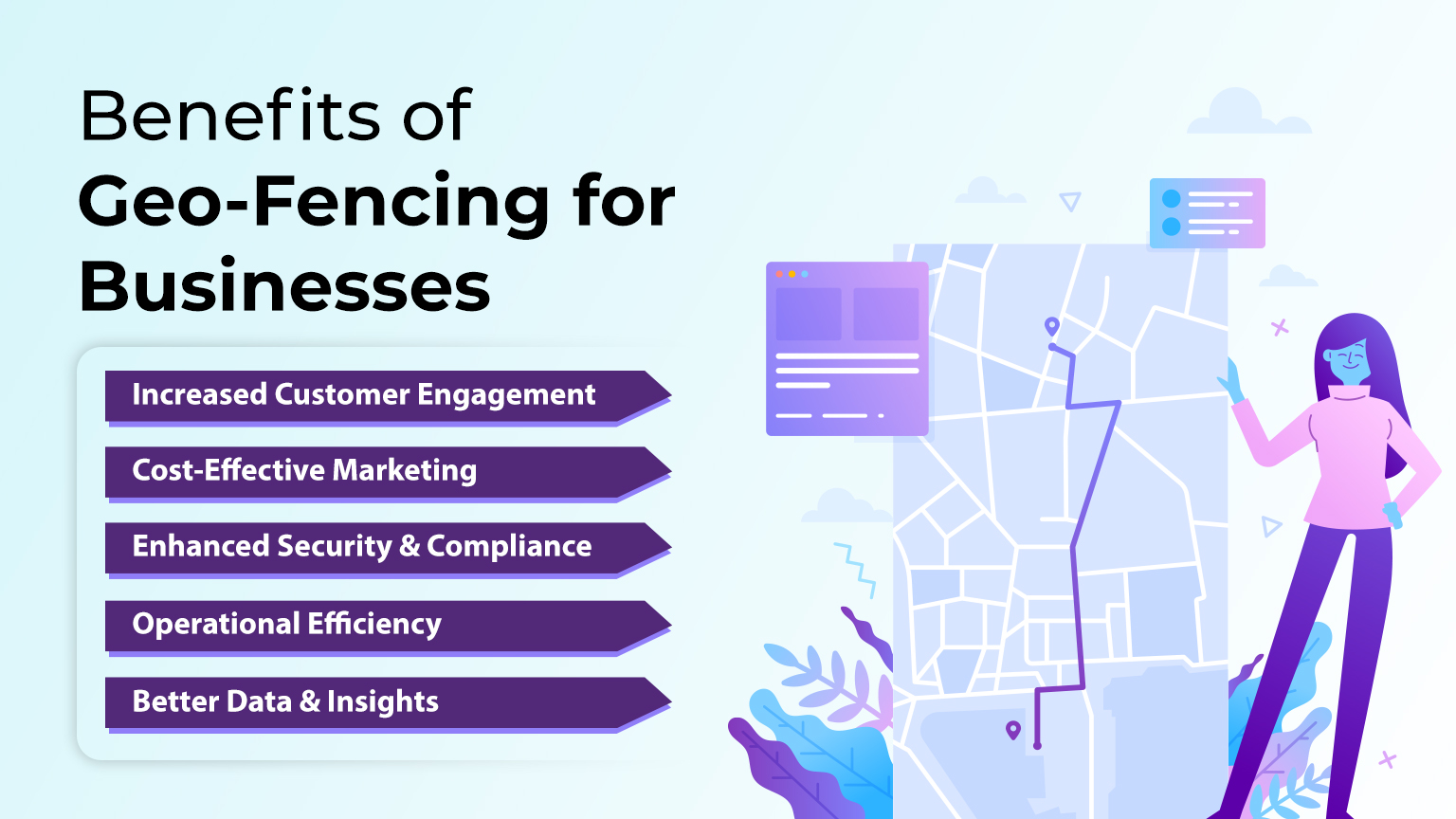Have you ever walked past a coffee shop and your phone buzzed with a notification offering you a 20% discount on your favorite latte? This is a real-world application of geo-fencing, a powerful location-based technology that transforms marketing and security across industries.
Enterprises today are leveraging geo-fencing technology to enhance customer engagement, optimize security, and streamline operations.
Today, in this blog we will explore how companies are using geo-fencing technology to revolutionize location-based marketing and security. We will also try to find out its benefits, use cases, and future trends.
Benefits of Geo-Fencing for Businesses
- Increased Customer Engagement
- Cost-Effective Marketing
- Enhanced Security & Compliance
- Operational Efficiency
- Better Data & Insights
Contents
What is Geo-Fencing?
Geo-fencing, as the term suggests, is a virtual boundary that is created around a specific geographic area by leveraging various technologies like GPS, RFID, Wi-Fi, and cellular data.
When a mobile device or RFID tag enters or exits a Geo-fenced area, it triggers an action, for example, sending a notification, logging on entry, and restricting access.
This technology can be used on various business applications such as hyper-targeted marketing as well as advanced security protocols.
This is a game-changer for various industries such as retail, hospitality, logistics, enterprise security, and more.
Geo-fencing in Location-Based Marketing
1. Hyper-Personalized Customer Engagement
This technology allows businesses to engage customers in real-time which provides location-specific offers and promotions.
As a result, you get higher conversion rates because you are enabled to send targeted messages to your customers when they are more likely to take action.
Example: Send push notifications offering discounts when customers enter your store.
2. Geo-Targeted Advertising
Leverage geo-fencing technology to display relevant ads to your users within the defined area. This ensures higher ad relevance and engagement which maximizes your ROI.
3. Enhanced In-Store Experience
Many retailers implement geo-fencing to guide customers inside their stores. It provides product recommendations and navigation assistance.
4. Event-Based Marketing
Leverage geo-fencing around event venues to promote exclusive offers, contests, and product demos.
5. Competitor Conquesting
Empower your businesses to deploy geo-fencing technology around competitor stores to acquire your competitor’s customers by offering better deals.
Geo-Fencing in Business Security
1. Restricted Area Monitoring
Geo-fencing can ensure that only authorized personnel get access to the location, which reduces security risk.
2. Theft Prevention & Asset Tracking
Empower your organization to track high-value assets and prevent theft by using geofencing technology.
3. Time & Attendance Tracking
It can automate employee attendance by tracking their presence in the workplace.
4. Geofenced Cybersecurity Measures
Organizations can enhance cybersecurity by restricting network access based on employee locations.
5. Emergency Response & Safety
Leverage Geo-fencing technology to assist in crisis management by auto-detecting unauthorized movement and security breaches.
Benefits of Geo-Fencing for Businesses
- Increased Customer Engagement: Create highly targeted marketing results to create higher engagement and conversion rates.
- Cost-Effective Marketing: Implement geo-targeted advertising which reduces ad spend waste and ensures ads reach the right audience.
- Enhanced Security & Compliance: Businesses leverage Geo-fencing technology to improve security protocols and regulatory compliance through automated monitoring.
- Operational Efficiency: You can also leverage it to reduce manual tracking efforts and improve productivity and efficiency.
- Better Data & Insights: Enable businesses to gain valuable location-based analytics and optimize their strategies.
Challenges & Considerations
While Geo-fencing provides various benefits, you also need to address various challenges:
- Privacy: Users could feel uncomfortable with constant location tracking.
- Battery Drain: It consumes the device’s battery life
- Device Accuracy: GPS and network variations could affect geo-fencing precision
- Compliance: Businesses should comply with data privacy regulations such as GDPR and CCPA
Future Trends in Geo-Fencing
1. AI-Driven Geo-Fencing: Leverage artificial intelligence to enhance predictive customer targeting and automated security alerts.
2. Integrate with IoT: Empower smart home security, automated access control, and intelligent asset tracking.
3. Blockchain for Security: Decentralized location data will increase security and prevent spoofing.
4. 5G-Powered Precision: Enable more accurate real-time geofencing for faster connectivity.
Conclusion
Geo-fencing technology is transforming the way businesses engage customers and secure assets. Whether providing real-time deals, ensuring workplace safety, or optimizing marketing campaigns, this technology is proving to be a game-changer.
As technology advances, we can expect even more sophisticated applications, blending AI, IoT, and real-time analytics to create a smarter, safer, and more personalized digital world.










